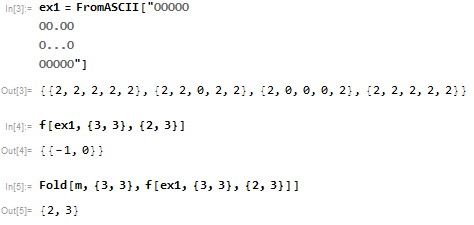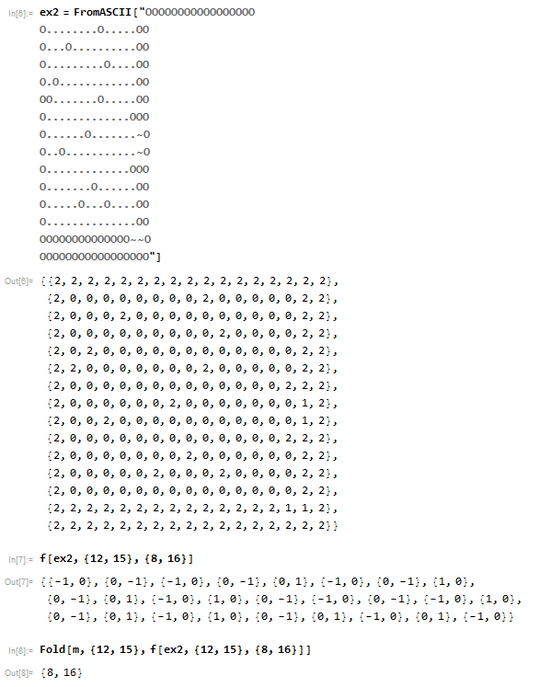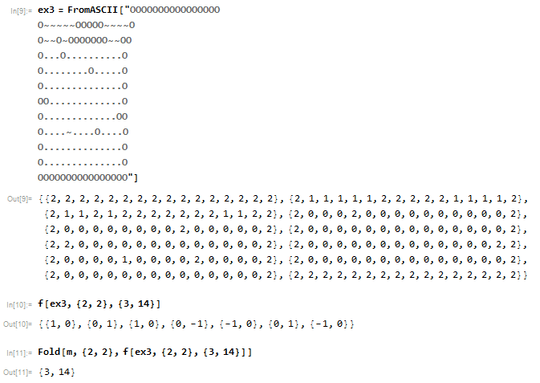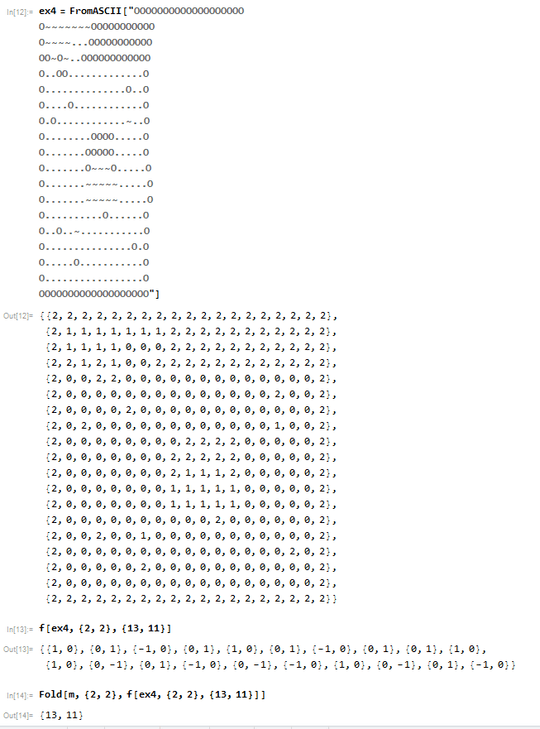19
2
Ice mazes have been one of my favorite staples of Pokémon games since their debut in Pokémon Gold and Silver. Your task will be to make a program that solves these types of problems.
Ice mazes primarily consist of, as the name suggests, ice. Once the player moves in a direction on ice they will continue to move in that direction until they collide with some obstacle. There is also soil which can be moved across freely and will stop any player moving across it. The last obstacle is stone. Stone cannot occupy the same space as the player and if the player attempts to move into it they will stop moving before they can.
You will receive a two dimensional container of values, such as an list of lists or a string separated by newlines, containing 3 distinct values for each of the 3 types of flooring (Ice, Soil, and Stone). You will also receive two pairs (or other equivalent two value containers) that indicate a start and goal coordinate in the maze. These may be zero or one indexed.
You must output a list of moves (4 distinct values with a bijection onto N,E,S,W) that would cause the player to arrive at the end when carried out.
Input will always have a closed perimeter of stone around the maze so you do not have to worry about the player exiting the maze
This is code-golf so the fewest bytes wins
Test Cases
Here . will represent ice, ~ will represent soil, and O will represent a stone. Coordinates are 1 indexed. Each letter in the solution represents the direction beginning with that letter (e.g. N= North)
Input
OOOOO
OO.OO
O...O
OOOOO
Start : 3,3
End : 3,2
Output
N
Input
OOOOOOOOOOOOOOOOO
O........O.....OO
O...O..........OO
O.........O....OO
O.O............OO
OO.......O.....OO
O.............OOO
O......O.......~O
O..O...........~O
O.............OOO
O.......O......OO
O.....O...O....OO
O..............OO
OOOOOOOOOOOOOO~~O
OOOOOOOOOOOOOOOOO
Start : 15,12
End : 16,8
Output
N,W,N,E,N,E,S,W,N,W,S,E,S,E,N,E,N
Input
OOOOOOOOOOOOOOOO
O~~~~~OOOOO~~~~O
O~~O~OOOOOOO~~OO
O...O..........O
O........O.....O
O..............O
OO.............O
O.............OO
O....~....O....O
O..............O
O..............O
OOOOOOOOOOOOOOOO
Start : 2,2
End : 14,3
Output
E,S,S,W,N,E,N
Input
OOOOOOOOOOOOOOOOOOO
O~~~~~~~OOOOOOOOOOO
O~~~~...OOOOOOOOOOO
OO~O~..OOOOOOOOOOOO
O..OO.............O
O..............O..O
O....O............O
O.O............~..O
O........OOOO.....O
O.......OOOOO.....O
O.......O~~~O.....O
O.......~~~~~.....O
O.......~~~~~.....O
O..........O......O
O..O..~...........O
O...............O.O
O.....O...........O
O.................O
OOOOOOOOOOOOOOOOOOO
Start : 2,2
End : 11,11
Output
E,E,E,E,E,S,S,E,N,W,S,E,N,N,N





Will the input always have at least one valid solution? – Pavel – 2017-01-10T04:40:21.453
@Pavel You can assume so. – Post Rock Garf Hunter – 2017-01-10T04:41:49.153
Are the test cases (row, column) or (column, row)? 1 or 0 indexed? Do the board edges count as walls? – MildlyMilquetoast – 2017-01-10T04:44:49.303
@MistahFiggins 1 indexed – Post Rock Garf Hunter – 2017-01-10T04:45:55.880
5Related – Peter Taylor – 2017-01-10T07:13:04.537
Related – Post Rock Garf Hunter – 2017-01-10T14:25:31.850
Is it okay to assume that for every accessible cell there is a way to get out of the maze, i.e. it is impossible to permanently trap yourself in the maze? – busukxuan – 2017-01-10T17:14:43.420
2@busukxuan You can be permanently trapped in the maze (see testcase 1) – Post Rock Garf Hunter – 2017-01-10T17:18:20.943